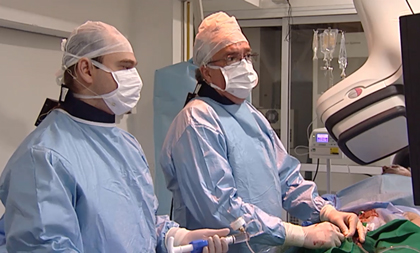Neoatherosclerosis was frequently observed in patients who experienced very late stent thrombosis, particularly those with drug-eluting stents. In-stent plaque rupture was the most common cause of thrombosis and it usually occurred in cases in which the original procedure had been carried out while the patient was undergoing an acute myocardial infarction. Macrophage infiltration can be identified in optical coherence tomography (OCT) and it probably is an important indicator of vulnerability for such new plaque.
 The purpose of this study was to assess neoatherosclerosis in prospectively enrolled patients who experienced very late stent thrombosis (>1 year after implantation). All of them underwent OCT.
The purpose of this study was to assess neoatherosclerosis in prospectively enrolled patients who experienced very late stent thrombosis (>1 year after implantation). All of them underwent OCT.
Overall, 134 patients were admitted with very late stent thrombosis and underwent OCT. In 58 patients, there was neoatherosclerosis; in 76, there was none. In-stent plaque rupture was the most frequent cause (31%) of thrombosis in all patients, particularly in those with neoatherosclerosis (69%), whereas uncovered stent struts were the most frequent cause in patients without neoatherosclerosis.
Read also: A Simple Trick to Improve Our Transradial Punctures.
Macrophage infiltration was more frequent in segments with plaque rupture, whereas calcification was present more commonly in segments without plaque rupture.
Drug-eluting stents were significantly associated with the formation of neoatherosclerosis (p = 0.02), whereas plaque rupture in segments with neoatherosclerosis was more frequent in cases in which the index procedure had been carried out while the patient underwent an acute myocardial infarction (p = 0.003).
Conclusion
Neoatherosclerosis was frequently observed in patients with very late stent thrombosis, especially in association with drug-eluting stents. New plaque rupture was the most frequent physiopathological mechanism for thrombosis.
Original title: Neoatherosclerosis in Patients with Coronary Stent Thrombosis Findings from Optical Coherence Tomography Imaging. (A Report of the PRESTIGE Consortium).
Reference: Michael Joner et al. J Am Coll Cardiol Intv 2018;11:1340-50.
Get the latest scientific articles on interventional cardiologySubscribe to our weekly newsletter
We are interested in your opinion. Please, leave your comments, thoughts, questions, etc., below. They will be most welcome.





